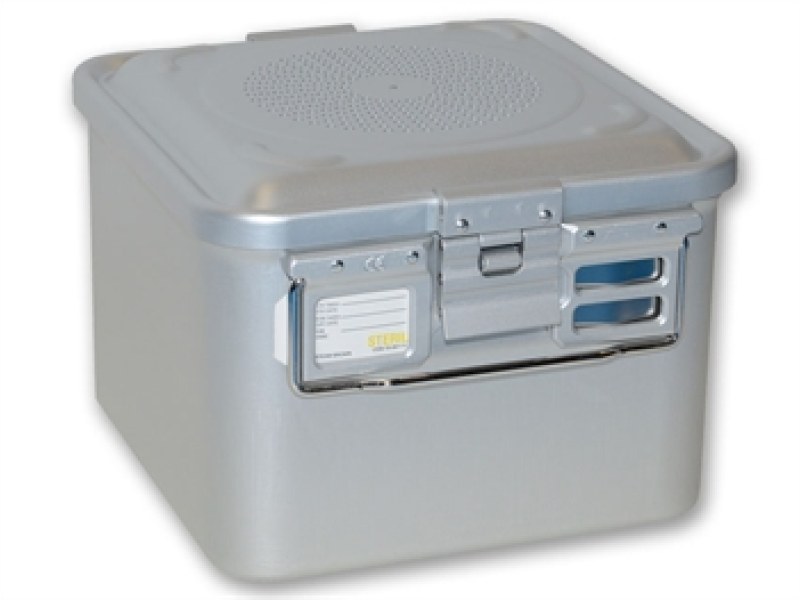The availability at retail stores may vary. For better service, order online or contact the store

Click on an image to open Gallery
The availability at retail stores may vary. For better service, order online or contact the store
If we compare stainless steel and aluminium alloy, we notice that the heat conduction coefficient of aluminium is 14,3 times higher; this means that, conditions being equal, the heat is transmitted 14,3 times more quickly through aluminium than through a similar piece of stainless steel. Moreover, thanks to the low specific density of aluminium alloy, it is possible to produce containers with a bigger thickness and with a slightly inferior weight.
This specificity has a great importance as to the heat conductibility and the sturdiness of the container.
Furthermore, thanks to the above mentioned features, it is well-known that at the end of the sterilization inside aluminium containers some excellent results are noticed about the drying of
the content, while on the contrary in a stainless steel container we always notice an elevated degree of damp and the presence of condensation.
That being stated, thanks to the collaboration had and researched by the operators of the sector, Titanox s.r.l. is pleased to introduce its new line of containers in aluminium alloy.
GENERAL FEATURES
• Completely made of aluminium alloy 5005, thickness 2 mm. Body and lid completely pressed without welding.
Very sturdy.
• Gasket which ensures a perfect watertight, made of non-toxic silicone sponge that guarantees the maximum seal. Easily replaceable as well as the filters for steam passage.
• Lock with locking system against casual opening. Seal application system.
• Label-holder for storage and classification.
• Handles for transport.
• Guaranteed anodizing for natural colour or other colours, thickness 20 microns.
• Lid colours: grey, yellow, blue, red, green.
• Stacking system compatible also with other manufacturing houses.
FOR AN EXCELLENT OPERATION, WE SUGGEST YOU TO ALWAYS MAKE THE FOLLOWING CHECKS BEFORE
USING THE CONTAINERS:
• Lid gasket: check that the gasket is sufficiently elastic and that there are no cuts on it.
• Locks: check that the locks levers (hinges) sufficiently oppose the force supplied in the opening and that the
pressure caused by the clamp is adequate to compress the silicon gasket.
• Filters: check that the filters duration has not expired, that the filter is correctly positioned and that the filter is
not cut or pierced.
Having trouble with any of our products or just want to return? You can return it within 14 days of receipt or ask for replacemend or refund.
Request an official quote for the products you have collected in the cart with one click!
Over 70 years now we are active in the field of health, with high quality products and services, from the largest domestic and international health product houses!